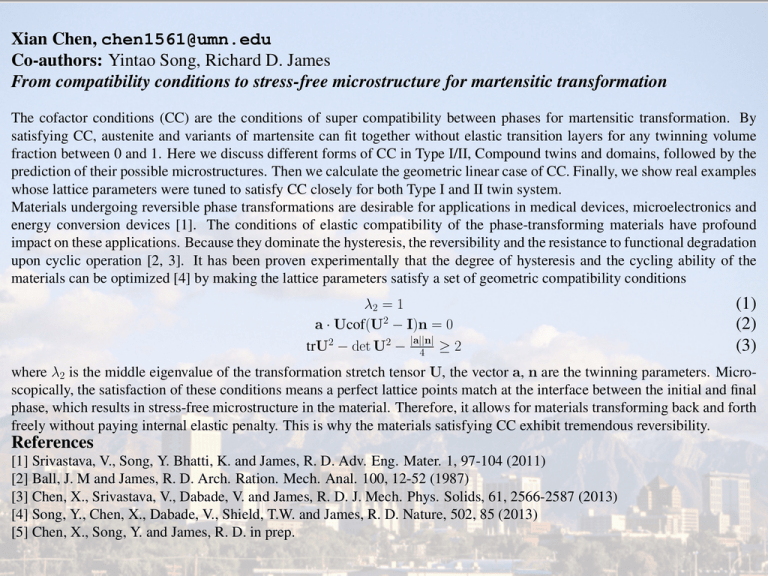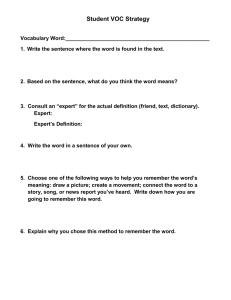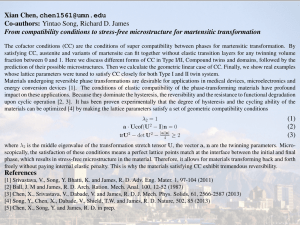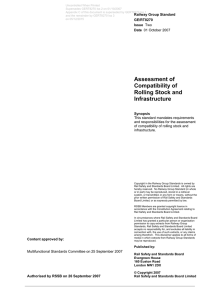Co-authors: Yintao Song, Richard D. James
advertisement

Xian Chen, chen1561@umn.edu Co-authors: Yintao Song, Richard D. James From compatibility conditions to stress-free microstructure for martensitic transformation The cofactor conditions (CC) are the conditions of super compatibility between phases for martensitic transformation. By satisfying CC, austenite and variants of martensite can fit together without elastic transition layers for any twinning volume fraction between 0 and 1. Here we discuss different forms of CC in Type I/II, Compound twins and domains, followed by the prediction of their possible microstructures. Then we calculate the geometric linear case of CC. Finally, we show real examples whose lattice parameters were tuned to satisfy CC closely for both Type I and II twin system. Materials undergoing reversible phase transformations are desirable for applications in medical devices, microelectronics and energy conversion devices [1]. The conditions of elastic compatibility of the phase-transforming materials have profound impact on these applications. Because they dominate the hysteresis, the reversibility and the resistance to functional degradation upon cyclic operation [2, 3]. It has been proven experimentally that the degree of hysteresis and the cycling ability of the materials can be optimized [4] by making the lattice parameters satisfy a set of geometric compatibility conditions λ2 = 1 a · Ucof(U2 − I)n = 0 trU2 − det U2 − |a||n| 4 ≥2 (1) (2) (3) where λ2 is the middle eigenvalue of the transformation stretch tensor U, the vector a, n are the twinning parameters. Microscopically, the satisfaction of these conditions means a perfect lattice points match at the interface between the initial and final phase, which results in stress-free microstructure in the material. Therefore, it allows for materials transforming back and forth freely without paying internal elastic penalty. This is why the materials satisfying CC exhibit tremendous reversibility. References [1] Srivastava, V., Song, Y. Bhatti, K. and James, R. D. Adv. Eng. Mater. 1, 97-104 (2011) [2] Ball, J. M and James, R. D. Arch. Ration. Mech. Anal. 100, 12-52 (1987) [3] Chen, X., Srivastava, V., Dabade, V. and James, R. D. J. Mech. Phys. Solids, 61, 2566-2587 (2013) [4] Song, Y., Chen, X., Dabade, V., Shield, T.W. and James, R. D. Nature, 502, 85 (2013) [5] Chen, X., Song, Y. and James, R. D. in prep.







